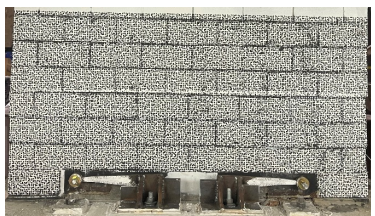Yara Soliman, Mohamed Ezzeldin, and Lydell Wiebe
i Ph.D. Candidate, McMaster University, Hamilton, Canada, solimy1@mcmaster.ca
ii Associate Professor, McMaster University, Hamilton, Canada, ezzeldms@mcmaster.ca
iii Professor, McMaster University, Hamilton, Canada, wiebel@mcmaster.ca
ABSTRACT
Most controlled rocking masonry walls (CRMWs) that have been studied previously depend on unbonded post-tensioning (PT) tendons for self-centering but often suffer from high prestressing losses and challenging repairs after damage. The current study examines an innovative CRMW design that eliminates unbonded PT tendons, instead relying on vertical gravity loads for self-centering. By integrating rubber pads to mitigate toe crushing, this new design not only minimizes structural damage but also significantly enhances lateral displacement capacity, offering a more resilient and efficient alternative to conventional masonry systems. The test wall, constructed from half-scale fully-grouted concrete masonry blocks and equipped with steel flexural yielding arms as externally-mounted energy dissipation devices, was subjected to dynamic snap-back testing and quasi-static cyclic loading. The experimental results are presented, including free vibration response, equivalent viscous damping, and force-displacement characteristics. The findings highlight the system’s effectiveness in reducing damage and enhancing lateral displacement capacity compared to conventional masonry systems. The results also highlight the potential of rubber pads in mitigating compression toe issues and further improving the seismic resilience of CRMWs.
KEYWORDS: self-centering, controlled rocking, experimental testing, dynamic, rubber pads, reinforced masonry walls.
025-Soliman.pdf



